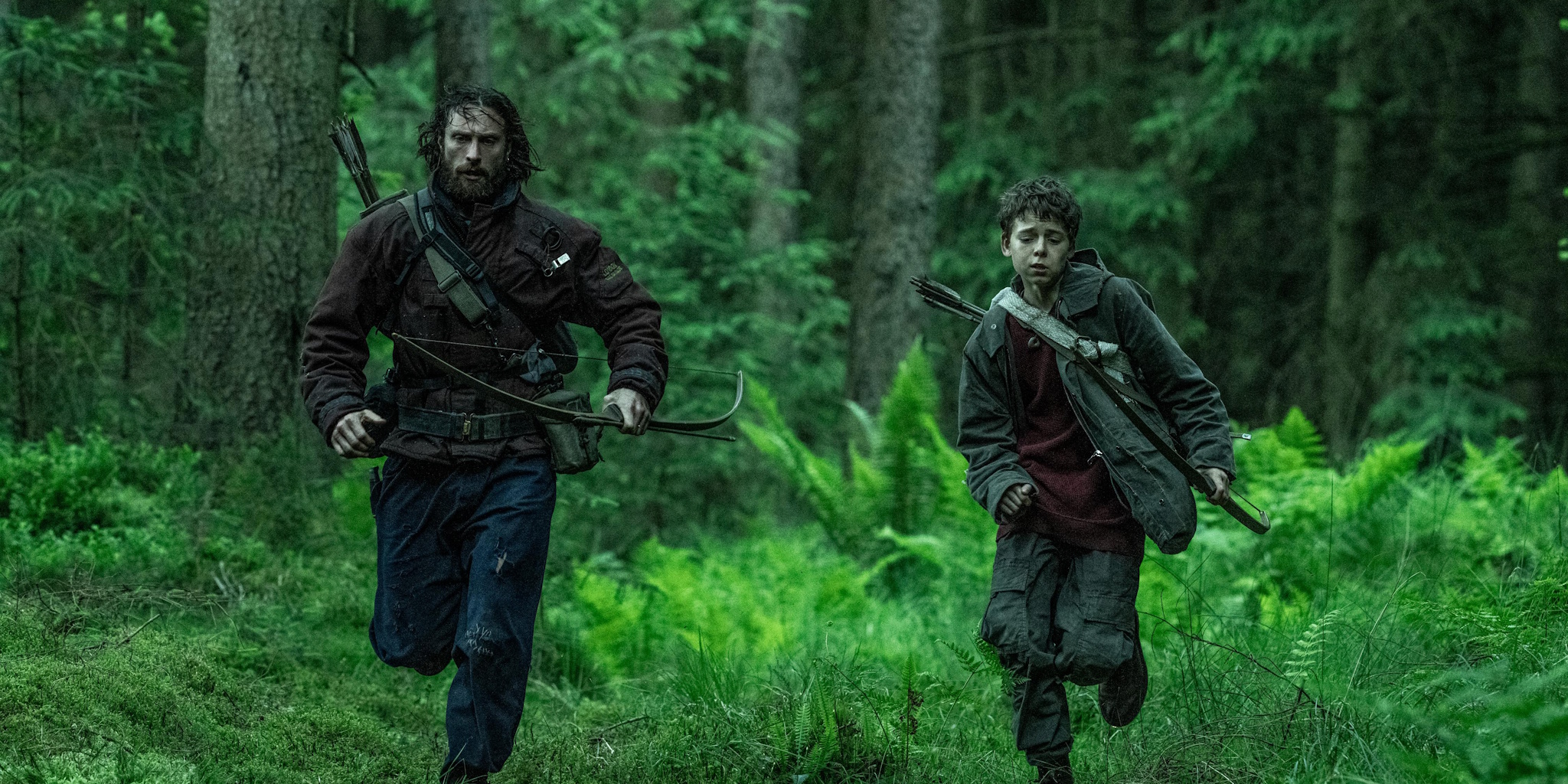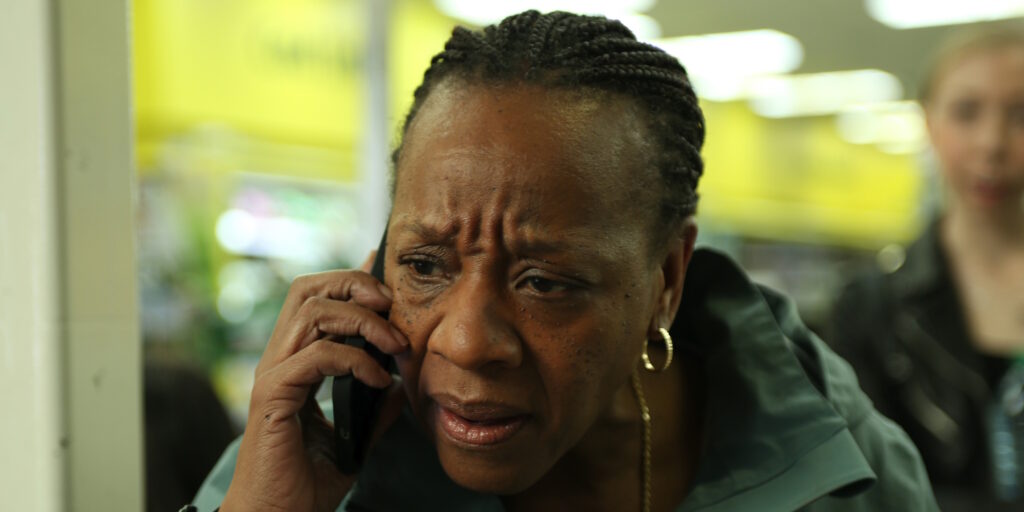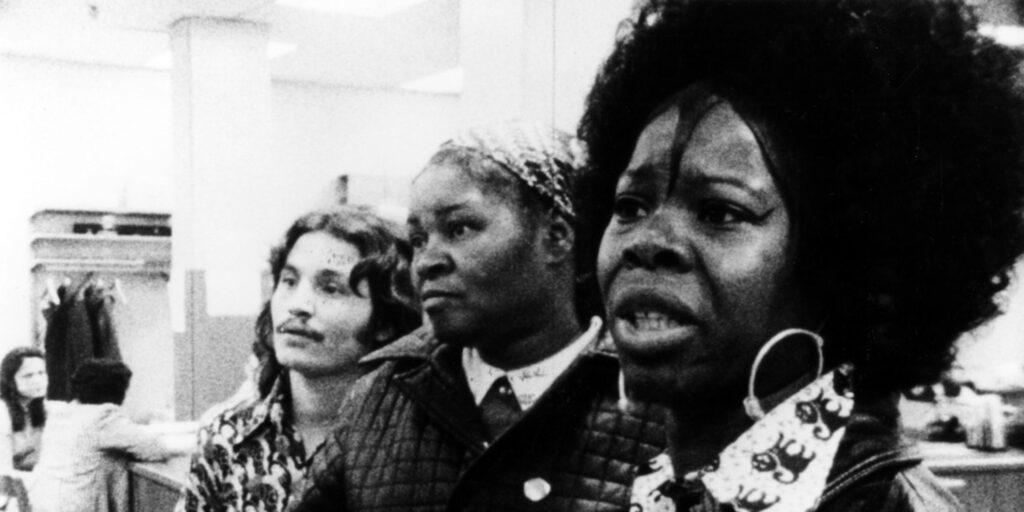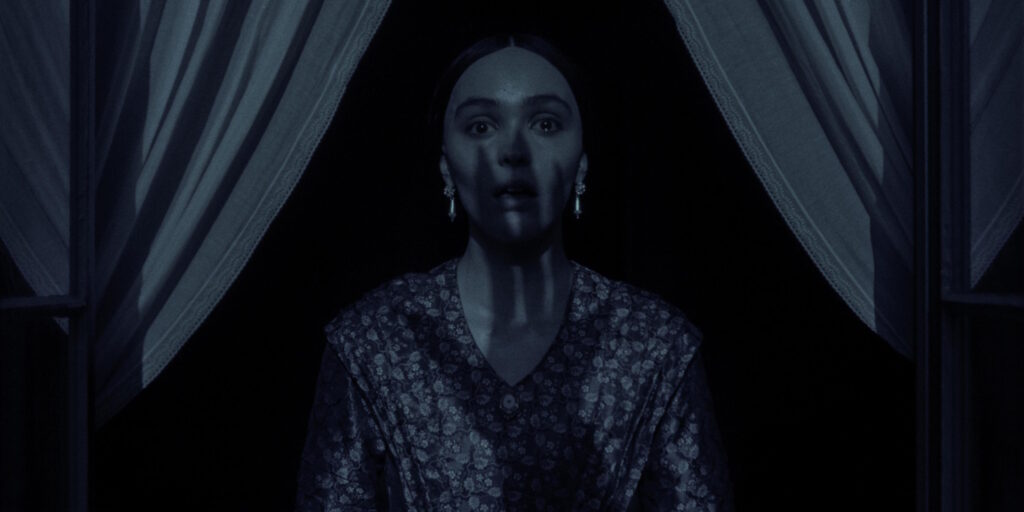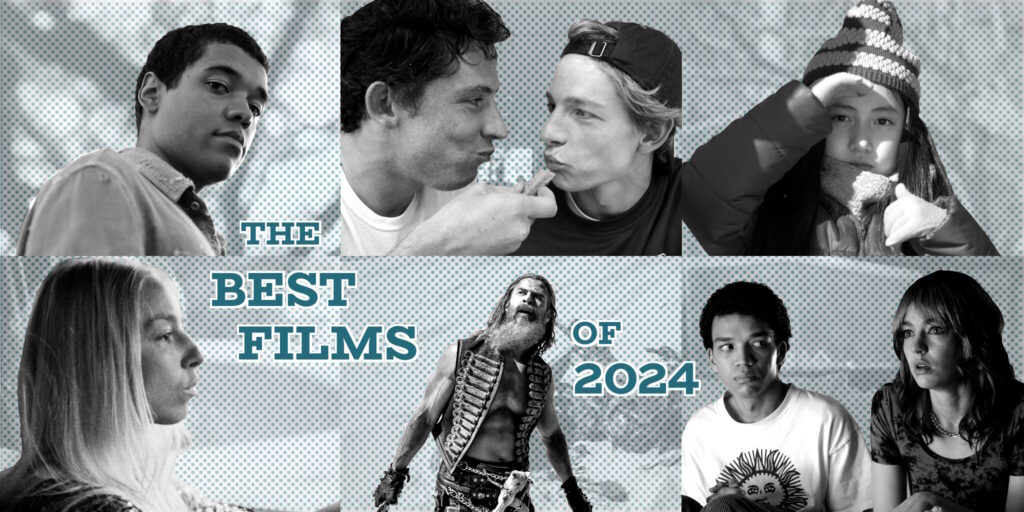“You were thinking that you’ll never hear another piece of original music ever again. You’ll never read another book that hasn’t already been written … or see a film that hasn’t already been shot.” This line from Selena (Naomi Harris) in 28 Days Later (2002) best captures the abstract terror that the film’s premise brings to the well-trodden genre of the zombie movie. Danny Boyle’s feature admittedly does wonders for revitalizing the superficial aspects of the subgenre (What if zombies … go fast?). Yet each moment throughout the film carries a listless dread, a weight that only becomes heavier as its characters reach each realization regarding the hopelessness of their situation. While other zombie movies often function as survival thrillers about prevailing amid endless hordes of the undead, 28 Days Later remains fixated on an aspect not often touched on, even in classics like Night of the Living Dead (1968): The Death of Culture.
The film’s dated 2002-isms – such as the ads seen in the empty streets of London and the low-def cinematography courtesy of consumer-grade Canon digital cameras – ultimately reinforce the story’s frozen-in-time qualities. For Great Britain, deemed a lost cause and quarantined indefinitely until the Rage virus burns itself out, 2002 was the last year the island was connected to the rest of the world. Its people would never experience new technology like smartphones or the countless new artists, musicians, filmmakers, and authors from other countries who have emerged in the past 20 years. Meanwhile, Britain’s native creators were either killed, infected, never born, or are too busy surviving to make the art they might have made elsewhere.
However, the truth is that culture can never die, it only shifts. For director Danny Boyle and writer Alex Garland, the shift is both optimistic and ominous. In its title alone, 28 Years Later carries the same sense of dread as its predecessor, albeit for different reasons. Days featured the collapse of a once-functioning country; Years shows what the people who were left for dead have done with their despoiled homeland. Having been left to their own devices for almost 30 years since the outbreak of the Rage virus, the Brits have gone from a singular capitalistic society to several regressive, isolated communities. (Presumably, the Paris invasion seen at the conclusion of Juan Carles Fesnadillo’s 2007 sequel, 28 Weeks Later, didn’t amount to much.)
Taking place in Lindisfarne, a remote island off the coast of Northumberland that can only be reached by a causeway during low tide, the film illustrates how a small group of people have managed to survive. The islanders live off the land much as their ancestors did, albeit with strict rationing (bacon has become a luxury only eaten on special occasions). Children are taught self-defense and obliged to choose the role (farmer, councilor, sentry, etc.) that they will pursue during adulthood. The only gate to the mainland is heavily guarded by townspeople armed with arrows, a ballista, and spotlights. They are understandably paranoid about the inevitable day that the Infected, now living as animalistic tribes in the deep forest on the mainland, will discover a way across the causeway.
This is the world that 12-year-old Spike (Alfie Williams) has known all his life. Having never experienced Britain before the outbreak, the throwback existence of Lindisfarne is normal for the boy. This explains why his attitude toward his first trip to the mainland with his father – a coming-of-age ritual for which even the rest of the townsfolk deem him too young – is similar to any adolescent’s feelings about their first hunting trip. Over nearly three decades, the Infected have evolved into different types of horrors, such as the gigantic, well-hung alphas and obese, slow-moving crawlers. Yet Spike is less concerned about the potential dangers of coming face-to-face with such monsters than with impressing his dad, Jamie (Aaron Taylor-Johnson).
Together, father and son venture through the woods, practicing their skills in killing the Infected, and it is here that Boyle brings out the themes in Garland’s script. As they travel across the causeway, the Young Fathers’ anxiety-inducing score blends with a 1915 recording of Rudyard Kipling’s war poem “Boots,” with editor Jon Harris splicing in battle footage from Laurence Olivier’s Henry V (1944). Whenever Jamie and Alfie slay an Infected, the death is depicted via a “poor man’s bullet time” involving a 20-iPhone rig, showing off every sick arrow through the head. Jamie speaks of the Infected the way a particularly callous hunter might refer to wild animals, ignoring the horrid fact that the creatures they are stalking used to be human.
While traveling, the pair come across a man-made bonfire, with Jamie expressing fear of the mysterious man who created this ever-raging inferno. They also observe far-off patrolling military boats from foreign nations, eager to destroy anyone who tries to escape Britain, Infected or otherwise. Eventually, Jamie and Spike become trapped on the mainland and hunted by a persistent alpha. However, this conflict – which could have lasted for the duration of a different sort of film – is quickly resolved. Here one realizes that this hunting trip is only the first act in something more subversive and heartfelt than one might expect from a zombie film. Never mind the film’s intense marketing campaign, which practically screamed, “Oh, it gets worse!” The dramatic questions seemingly posed by the film’s opening act – Does the island get overrun with Infected? Do father and son get separated? – are soon set aside for a coming-of-age tale about a child realizing that there is more to life than mere survival, in the best and worst ways.
Significantly, Spike’s mother, Isla (Jodie Comer), is suffering from a mysterious illness that has resisted both diagnosis and treatment. She isn’t Infected, so she doesn’t need to be axed; the only thing to do is to wait for death to claim her, no matter how isolating and painful her sickness becomes. Spike is pushed into action when he learns that the bonfire-building man he and his father avoided on the mainland is actually a medical doctor from the Before Times. (The boy is only further inflamed when he secretly witnesses Jamie prematurely moving on from his mother with another woman.) And so, in a moment of bravery and idiocy, Spike sneaks back onto the dangerous mainland with a half-delirious Isla in tow, in a last-ditch effort to save his mother’s life.
This story shift draws from other zombie media that 28 Days Later inspired over the past two decades. One can even note the similarities between Spike’s desperation to save his mother and the personal conflicts in The Last of Us (2023-). However, while the latter gives in to the bleakness of its genre tropes, Boyle and Garland go for something that cuts deeper. The 28 Days films can be viewed as a direct reaction to global events, with Days serving as a response to post-9/11 terrorism and Weeks as an allegory for the Iraq War. It makes sense, then, that Years has parallels to England’s self-imposed break with the EU via Brexit. From an American perspective, however, it is relevant that Spike’s community runs on fear and paranoia. The islanders are so afraid of interacting with what lies outside their gate that they have a policy against initiating rescue parties. Their alienation has led to a point where they think of death as an Other: an invader to be repelled militarily or an unwanted houseguest to be doggedly ignored. The islanders’ self-reliance may contribute to the survival of future generations, but the shadows on the cave wall are whittling the village down over time.
As Spike soon discovers, the scary fire starter building monuments made of human remains is not a crazed, Kurtz-like psychopath, but a fellow survivor who provides an alternative worldview that shakes Spike and the audience’s perspective for how an apocalypse should work. Having found a way to live among the Infected without losing his sanity, Dr. Ian Kelson (Ralph Fiennes) presents a notion that becomes the most fascinating theme in the film: Despite a lack of hope, choice is still possible and, more importantly, so is a kind of peace. In the film’s most heartbreaking scene, Spike is forced to confront the reality of death as something other than a violent assault from an enemy, as something unpreventable and demanding of respect. Once you respect this Other, only then can you learn to truly value life and heal from the trauma of a collapsed world. It’s a radical message for a genre typically so fixated on showing the worst of humanity.
Zombie media has always been pessimistic, sometimes to a fault. It’s easy to imagine how the mindless undead can perpetrate the destruction of connection, how everything can break down until it becomes unsalvageable. At its best, the genre can force the audience to question the extent of their own humanity, whether by comparing them to the zombies (e.g., undead as a symbol of mindless consumerism in Dawn of the Dead) or by illustrating how survivors handle the sudden shift into apocalyptic living. Yet zombie media rarely, if ever, shows viewers a successful recuperation. The Living Dead movies always end with a refuge being destroyed or, at best, characters escaping to a far-off paradise away from the carnage. The Last of Us reinforces misery through a character who selfishly saves a loved one by condemning the surviving population to endless suffering, only to subject that same person to more pain, to the point of destroying their life in a pointless revenge quest. Even The Walking Dead (2012-2022), a show about the importance of building community, spends most of its time creating conflict via wars with other groups, as well as the much-criticized shock value of constantly killing off characters. This genre can get so caught up in proving its anguish that the creators forget that said anguish and violence stop being an instinctual reaction to a bad situation and more of a storytelling tactic that becomes increasingly exhausting to experience.
This is what made 28 Days Later special. It’s salient that Selena, the 2002 film’s representative of this nihilistic mentality – a survivalist who declares that she would immediately kill someone if they got infected – later hesitates to butcher Jim (Cillian Murphy), despite not knowing if the Rage virus is inside him. Instead of giving in to hopelessness, like the film’s soldiers who have tricked people to show up to their sanctuary only to kill or enslave them, Jim chooses to save those he loves and holds on to the hope of being rescued, ending the film holding a banner announcing “HELLO” to the outside world.
That strange optimism permeates 28 Years Later. When Isla comes across a pregnant Infected woman, a sight that would inspire horror in any other person, she instead helps the creature give birth to her (seemingly uninfected) baby. The grimy aesthetic of Days evolves in Years to show the British countryside as beautiful and cinematic, while still conveying the story’s earnest perspective. Even the rough structure of the film – as revelatory as these ideas are, the film admittedly paces them out in a clunky way – is much more lively compared to the relatively clean writing of other zombie films. Most importantly, Years shows an apocalypse where a positive outcome is still possible. Not everything exists to destroy us.
Whatever the End Times takes away from society, survival still requires an open heart. As Spike eventually realizes, the world that he was taught to fear is wider and wilder than he imagined. If he can confront the darkest parts of existence while still remembering to love, then maybe the dead nation into which he was born can be rebuilt into something meaningful. Maybe, in the future, a new book will be written.
28 Years Later is now available to rent or purchase from major online platforms.
